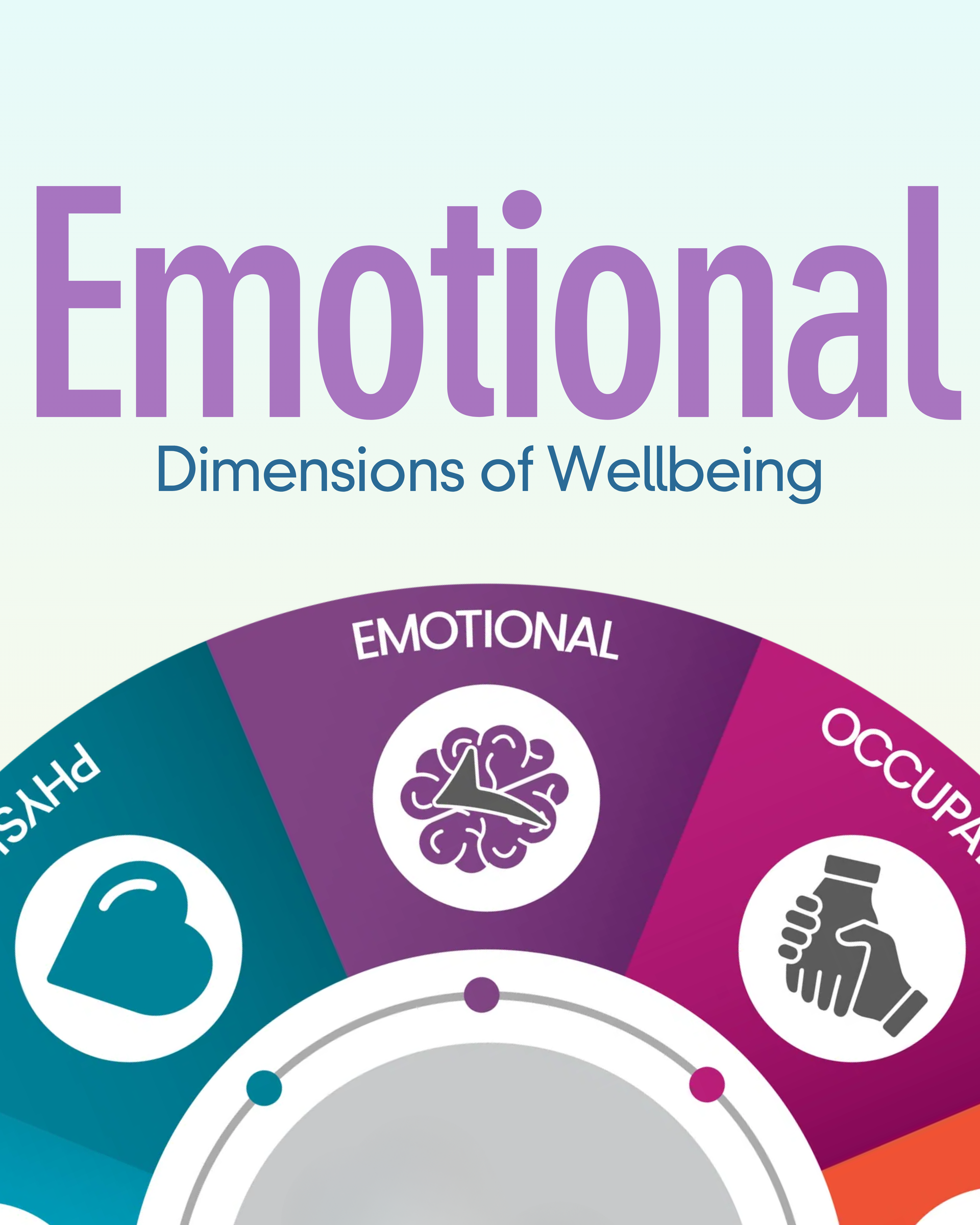The 8 Dimensions of Wellbeing: Emotional Wellbeing

When we talk about your “wellbeing” as a college student, we’re talking about more than having a good attitude or hitting the gym. Wellbeing is made up of eight interconnected dimensions that shape how we feel, function, and live. These include emotional, physical, social, intellectual, spiritual, environmental, occupational, and financial wellbeing. When one area is off, it can affect all the others.
In this post, we’re taking a closer look at the first dimension: Emotional Wellbeing.
What Is Emotional Wellbeing?

Emotional wellbeing is your ability to understand, manage, and express your emotions in ways that are healthy and productive. Great emotional wellbeing doesn’t mean you’re happy all the time. Instead, it’s recognizing and making space for a full range of emotions, from joy and excitement to frustration and grief.
At its core, emotional wellbeing is about
resilience, which the American Psychological Association defines as the ability to bounce back from stress, failure, or disappointment without becoming overwhelmed or shutting down.

How Emotional Wellbeing Shows Up
Emotional wellbeing plays out in everyday moments, and you may not even notice how it is showing up in your life as a college student. Some signs that your emotional wellbeing is in a good place might include:
- You can name and talk about how you’re feeling (beyond just “good” or “fine”).
- You’re able to manage stress without it derailing your entire day.
- You can sit with uncomfortable emotions without immediately needing to avoid, suppress, or fix them.
- You experience a sense of self-acceptance, even when you’re not at your best.
- You feel capable of facing life’s challenges and adapting when plans don’t go your way.
Emotional wellbeing also shows up in how you treat others. People with strong emotional wellbeing tend to be more empathetic, patient, and grounded. Even in the face of challenges life throws at them, they’ve developed a relationship with their emotions that allows them to respond thoughtfully instead of react impulsively.
What to Watch For
Because college can be an emotionally intense time, (Think: big life transitions, social pressures, academic demands) monitoring your emotional wellbeing becomes even more important. Here are some indicators that your emotional wellbeing needs attention:
- Mood swings that feel extreme or out of character
- Feeling emotionally numb or detached for long periods of time
- Avoiding situations or relationships to escape uncomfortable emotions
- Relying heavily on substances, food, or distractions to cope with stress
- Struggling to regulate emotions like anger, anxiety, or sadness
- Constant negative self-talk or perfectionism that makes it hard to feel “good enough”
None of these signs mean something is wrong with you. Think of them as clues your body and mind are giving you that this is a dimension that needs your attention. Simply noticing is the first step toward taking better care of yourself.
Coming Up Next:
Physical Wellbeing










